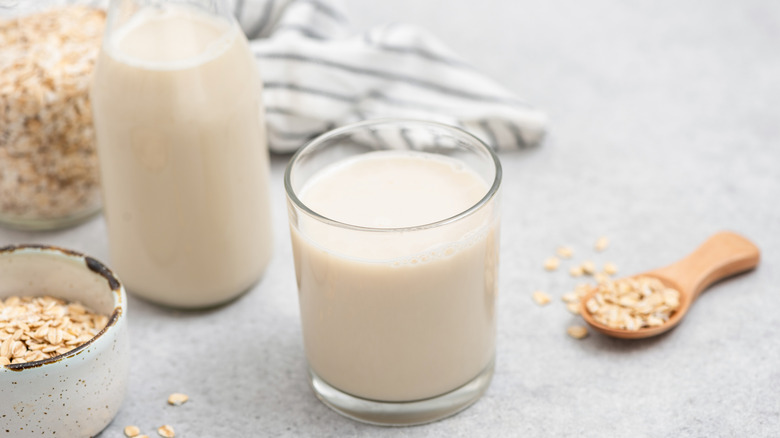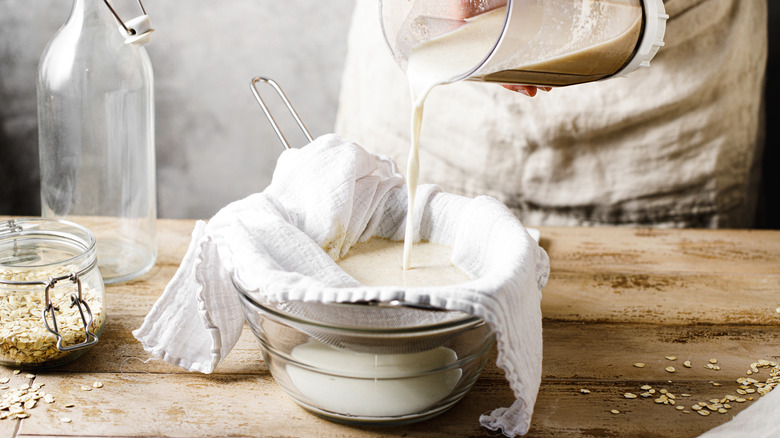Why Your Homemade Oat Milk Is Slimy And How To Prevent It
Making oat milk at home is not only cost-effective but also allows you to tailor it to your taste. While the process is straightforward, but there are common mistakes that can ultimately affect the taste and texture of the liquid. One of the most frustrating issues is ending up with a slimy consistency, which can make your homemade oat milk less enjoyable. The key to avoiding this is to steer clear of heat during the preparation process. Using ice-cold water is a must to achieve the best taste and texture, so you get amazing oat milk that is smooth and delicious.
Ice-cold water is crucial to making non-slimy oat milk because heat activates the oats, causing them to release excess starch. This starch creates a gummy or slimy texture in the final product — essentially, the oats begin to cook, which is why the consistency starts resembling that of oatmeal. By using ice-cold water throughout the blending process, you minimize the oats' starch release, resulting in a creamier and more enjoyable milk. For the best results, start with chilled water and even add ice cubes if needed to keep the temperature as low as possible. This is one of the most important tips for oat milk success — but there are other steps you can follow to ensure you get the best results.
More tips for the best homemade oat milk
Making oat milk at home can save you hundreds of dollars per year — but that's a moot point if the oat milk doesn't taste good. To perfect your homemade oat milk, start by using rolled oats instead of instant or quick-cooking varieties. Rolled oats are less processed and lend a smoother, more balanced flavor to your milk. Additionally, blend the oats and water just long enough to achieve creaminess, as over-blending — just like using warm water — can cause excess starch release and a slimy texture. Blending too long can also cause the mixture to heat up. For a silky texture, strain the mixture through a nut milk bag or other fabric with a tight weave to remove any residual oat particles. A well-strained milk without over-blending ensures a refined, creamy consistency.
For barista-worthy oat milk, incorporate a bit of fat, as a small amount will help the texture be closer to dairy. This enhances the creaminess and frothiness, making it ideal for lattes, cappuccinos, or any coffee-based drink. Using filtered water ensures a cleaner taste, while a pinch of salt is a must to balance flavors. Customize your oat milk by sweetening it to taste with natural sweeteners like maple syrup or honey, and adding a pinch of cinnamon or nutmeg if desired. This way, you'll create a delicious, personalized oat milk perfect for enjoying in your favorite recipes and beverages.

